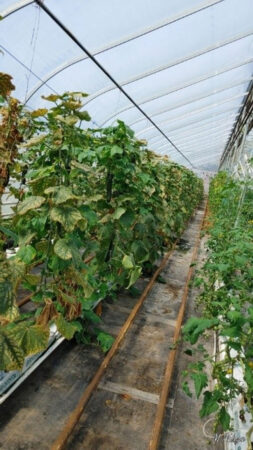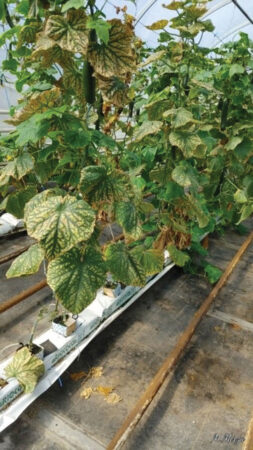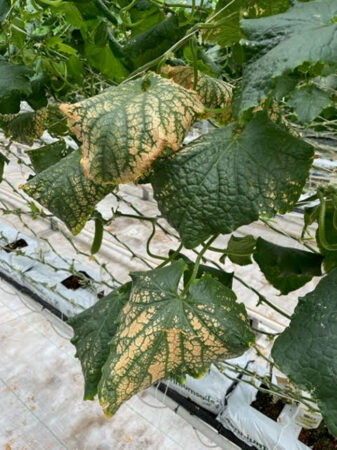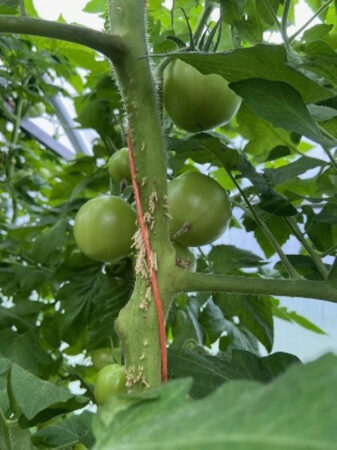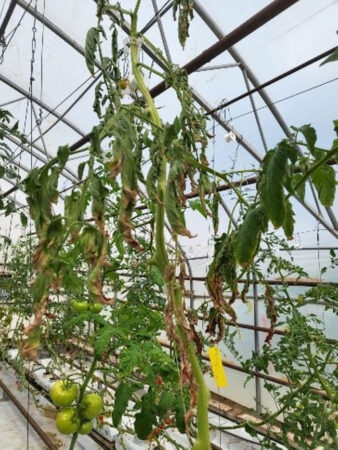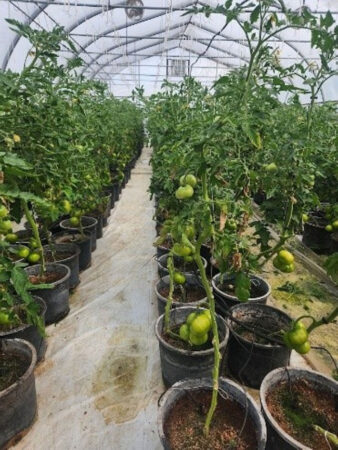
Features
Environmental Control
Management
Small space, big climate demands
Dr. Mohyuddin Mirza discusses crop production challenges in smaller greenhouse operations and methods to mitigate
October 27, 2025
By Dr. Mohyuddin Mirza
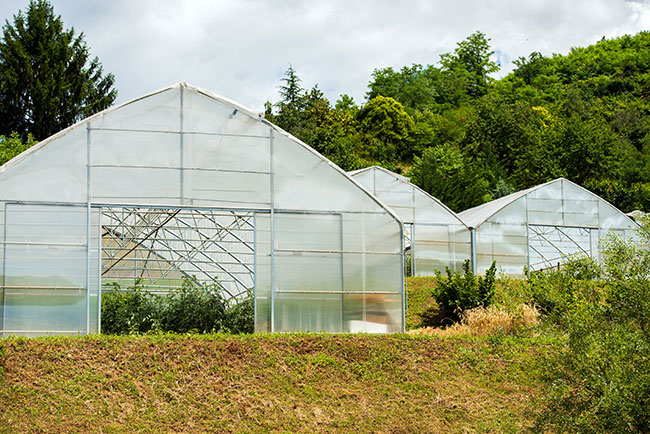 Smaller greenhouses serve a variety of important purposes but they come with some big climate management challenges.
IMAGE courtesy Robert Pavsic/GETTY IMAGES
Smaller greenhouses serve a variety of important purposes but they come with some big climate management challenges.
IMAGE courtesy Robert Pavsic/GETTY IMAGES This article discusses following points:
- Multiple crops are grown in smaller greenhouses and the biggest issue is lack of optimum climate control.
- High or low temperatures, high and low relative humidities affect the crop performance.
- CO2 levels can reach below ambient and thus affect yields.
- Insect and diseases can significantly affect the crops.
- Strategies to manage such greenhouses.
I deal with many greenhouse crop growers whose operations can be considered “small” in size. Varying anywhere from 3,000 sq.-ft. to 40,000 sq.-ft., these operations serve a variety of purposes, incluuding growing vegetable seedlings for their market gardens and full tomato, cucumber, pepper and other crops to supply the demands of a market garden. Recently, I visited a greenhouse growing eggplants, beans and many herbs like arugula, basil and other leafy crops.
Growing multiple crops in the same greenhouse can present many challenges, especially as it relates to climate control and pests. Consequently, yields can be lower when compared to good commercial crops. Let me take you through a one-acre, plastic greenhouse growing cucumbers, tomatoes, peppers, eggplants, beans and herbs.
Balancing climate
Climate control is the number one challenge in such greenhouses. Different crops require different temperatures, both day and night. Growers who struggle to achieve the desired 24-hour temperature and can lose control over wether or not a plant is vegetative or generative and maintaining a balanced growth.
In this case, the grower had peppers, eggplants and beans in addition to cucumbers and tomatoes. The cucumber crop was under a big stress. The day temperature was going above 35ºC and relative humidity was 35 per cent. This resulted in a very high vapour deficit or moisture deficit. The symptoms on leaves appeared to be much like magnesium deficiency, however, it is “transpiration stress.” This happens when the leaf temperature is close to air temperature and roots cannot meet the transpiration water loss.
The importance of transpiration from leaves and fruit skin must be understood properly. Just like in economics, there’s a balance between water demand (driven by transpiration) and water supply (provided by irrigation). In a greenhouse where multiple crops are grown, each crop will likely require different day and night temperatures, which means the demand for water for each crop will be different. If the irrigation system is not computer controlled and adjusting to each’s crops needs, all plants will get the same amount of water and nutrients.
In Canadian climates, we have challenges of both low relative humidity, like in the prairies, and high humidity in coastal climates. Both humidification and dehumidification systems are required. In this context, we need understand the relationship between temperature and relative humidity. Simply put, warm air can hold more moisture than cold air. When the temperature rises but no extra moisture is added, relative humidity decreases. Conversely, when the temperature drops, relative humidity increases — because cooler air has a lower capacity to hold water vapour.
In smaller greenhouses the relative humidity is a big challenge. It could be very dry where relative humidity drops below 30 per cent and temperature rises to 30ºC and above. That is evident in Images 1, 2 and 3. The grower attempted to ventilate more by opening the doors to bring the temperature down, but the relative humidity also drops resulting in symptoms that look like sun scalding. The photosynthetic area of leaves is significantly reduced and thus much less food is available to the plant for its needs. There was very limited new growth visible, lots of new cucumbers aborted and few existing fruits in poor condition.
Pest pressures
Besides climate-related leaf symptoms there was an abundance of pests and diseases. Spider mites forming webs on eggplants, quite a few aphids on peppers, whiteflies on peppers and spider mites also on beans. It was clear biological controls were not working.
Tomatoes are also affected under such conditions by showing smaller, dark-green leaves, clusters are or poor quality, blotchy ripening of fruit and in many cases of severed blossom end rot.
Images 4, 5 and 6 depict problems in three different greenhouses. Image 4 is an example of very high relative humidity whereby adventitious roots are developing on stems. Botrytis grey mould can easily target these plants if night temperature dips to dew point. Image 5 shows where very intense heat “toasted” the top parts of plant and there was also accidental dosing of high fertilizer rates. The EC in the root zone was very high.
Image 6 is an example of a tomato crop where grower used “garden” fertilizer which were labelled for tomatoes.
One can see poor flower and fruit set and thin, spindly growth. An interesting observation that this tomato grower was using same day and night temperatures on his thermostat. The grower believed that by using warmer night temperature, the crop can grow fast and will get large fruit.
I was able to convince him to use cooler night temperatures without going into too much details of photosynthesis and respiration.
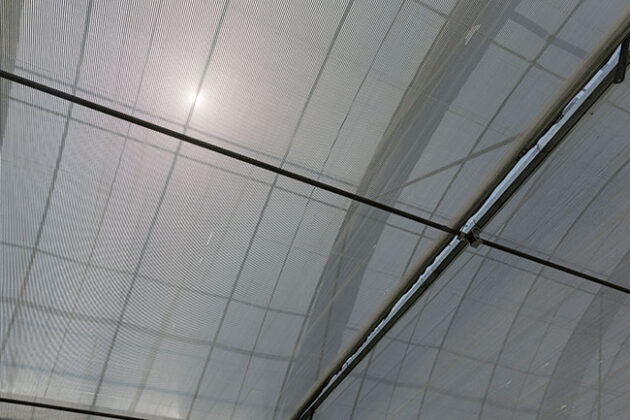
A little bit of shade goes a long way to controlling temperatures in the greenhouse
IMAGE courtesy offeekai/GETTY IMAGES
Strategies to improve climate
- For better temperature management, shade the roof with shading compounds. Reducing the amount of light coming into the greenhouse helps to reduce the temperature. Sometimes the thinking is that more light equates to better production, however, light contributes to heat as well. Only about five per cent is used for photosynthesis, the rest is used for heat. I remember a time when greenhouse roofs were shaded with hydrated lime or flour slurry, so the practice of applying shading compounds is an old one but effective nonetheless. With the arrival of inside screens, growers are in a better position to achieve desired light reduction.
- If possible, install misting or fogging systems. Fogging systems may require more investment but simple misting systems are relatively economical. I have seen many smaller growers using a fan to blow water across the greenhouse and also wetting the floor frequently during hot periods.
- Dehumidification may be achieved by controlling venting.
- Pests must be monitored regularly especially knowing the fact that eggplants can be a magnet for spider mites and white flies. Diseases like botrytis, powdery mildew and fusarium must be monitored.
I found lots of good information in Greenhouse Canada. Have copies handy at the lunch table so that staff could take advantage of this valuable knowledge resource.
Read more on crop management from Dr. Mirza.
Dr. Mohyuddin Mirza is an industry consultant in Alberta and can be reached at drmirzaconsultants@gmail.com
